Key Competencies Kit
for Facing Lifelong Learning


 |
This Project has been funded with support from the European Commission. This communication reflects the views only of the author, and the Commission can not be held responsible for any use which may be made of the information contained therein. |
 |
Didactic Unit 2 |
Theme |
Time |
Communication skills |
|
3 hours |
|
||
|

Reading skills are very important for many reasons: it is a powerful tool of communication with other people; a source of information and pleasure..
Successful word reading occurs when there is a match between the input letter string and a word representation. Reader could have trouble with processing letter strings or in selecting the required meaning of a word.
When one reads anything, one‘s objective is not to look at every word and picture as fast as one can. Rather, it is to identify and understand useful information and ideas as efficiently as possible. When it comes to reading, your subconscious mind is your radar that helps you to navigate texts and concentrate on what is interesting and important for you.
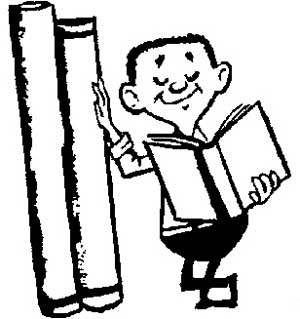
Here is a quick overview of the four types of reading skills used in every language:
1. Skimming - used to understand the "gist" or main idea. Run your eyes over the text, noting important information. It's not essential to understand each word when skimming. Examples - the newspaper (quickly looking through to get the general news of the day); magazines (quickly looking through to discover which articles you would like to read in more detail). Skimming is the technique you use when you are looking up a name in the phone book: you move your eye quickly over the page to find particular words or phrases that are relevant to the task you are doing.
2. Scanning - is used to find a particular piece of information. Run your eyes over the text looking for the specific piece of information you need. If you see words or phrases that you do not understand, do not worry when scanning. Examples -the "What's on TV" section of your newspaper, a train / airplane schedule.
3. Extensive reading - used for pleasure and general understanding. Extensive reading is used to obtain a general understanding of a subject and includes reading longer texts for pleasure as well as textbooks or training materials. Use extensive reading skills to improve your general knowledge of concrete subject. Examples of extensive reading: a novel you read before going to bed; magazine articles that interest you; textbook.
4. Intensive reading - accurate reading for detailed understanding. Intensive reading is used on shorter texts in order to extract specific information. It includes very close accurate reading for detail. Use intensive reading skills to grasp the details of a specific situation. In this case, it is important that you understand each word, number or fact. Examples – reading a job contract or other important documents.
When you are seeking knowledge by reading textbooks or other training materials, you need to make sure you are actively involved with reading. It is a waste of your time to just passively read, the way you had read a thriller on holiday. You should learn a huge amount from your reading. So train your mind to learn.
For active reading first gather the information, you need to focus on and set goals:

Here are four everyday life tips for making your reading really active:
1. Underlining and highlighting.
Pick out what you think are the most important parts of what you are reading. Do this with your own copy of texts or on photocopies, not with borrowed books.
If you are a visual learner, you will find it helpful to use different colours to highlight different aspects of what you are reading.
2. Note key words.
Record the main headings as you read. Use one or two keywords for each point. When you do not want to mark the text, keep a folder of notes you make while reading.
3. Note questions
Before you start reading something like an article, a chapter or a whole book, prepare for your reading by noting down questions you want the material to answer. While you are reading, note down questions, which the author raises.
Help your mind to engage and concentrate. Your mind is engaged in learning when it is actively looking for answers to questions.
Read the first section with your questions in mind. Look for the answers, and make up new questions if necessary. After each section, stop and think back to your questions. See if you can answer them from memory. If not, take a look back at the text. Do this as often as you need to. Once you have finished the whole chapter, go back over all the questions from all the headings. See you if can still answer them. If not, look back and refresh your memory.
4. Summarise and survey
Pause after you have read a section of text. Then:
Reading groups of words at each glance
It turns out that our eyes can only take in information when they are stopped. What feels like continuous motion is actually move-stop-read-move-stop-read, etc. You can easily verify this by sitting face to face with a partner, holding up a book and watching their eyes as they read. The key is to minimize the number of stops by maximizing the number of words you see at each stop as shown in the picture below.
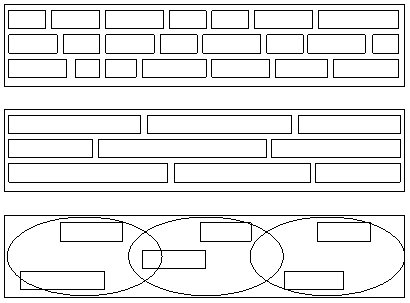
The person who uses the first eye movement pattern is actually looking at every word, one at a time. The person who uses the second is still looking at every word, but in groups. The person who uses the third eye movement pattern "notices" only a few key words and does so by reading both horizontally and vertically at the same time.
"But the first reader is going to comprehend the material much better than the third!" you may be thinking. Possibly, is my reply. If the third reader actually uses all three eye movement patterns, using the slower patterns very selectively, then he has a better chance of understanding material of most relevance to him.
The smart reader is one who uses the third technique to scan the entire text (overview) or chapter (preview), and then comes back and uses some combination of the first two techniques to further explore the sections of most relevance.
Getting to both the second and third levels requires a visual reading strategy. You must learn to "trust your eyes". This involves shifting your mental reading process from "see->say->understand" to just "see->understand".
One way to stop saying words in your head while reading is to increase the rate at which your eyes move across the page to the point where it is impossible to tell words. This means switching your reading strategy to a point whereby you notice gulps of words at each eye resting point. These gulps sometimes involve pulling words from multiple lines. When I did this recently, I noticed that I was still understanding what I was reading but in a different way. I caught myself thinking: "But now I'm not really reading." In other words, part of my mind still believed that the definition of reading was to look at every word and sound it out in my mind
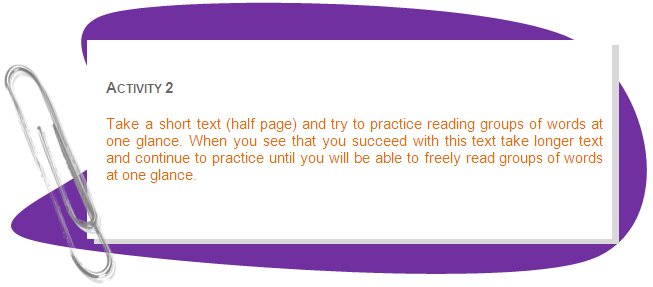
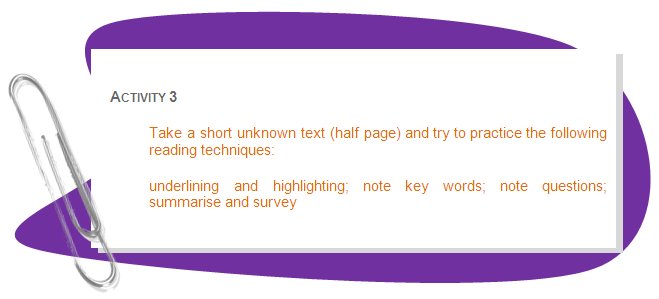
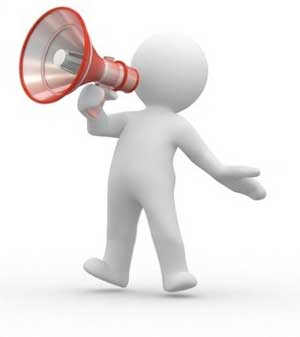
State your point of view as briefly as possible. Listening to a talkative, unorganized speaker is discouraging. Lengthy explanations are confusing to the listener and what you actually want to say loses its concreteness, relevance, and impact.
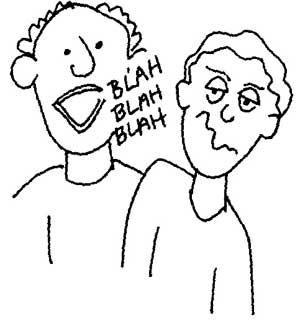
Improving speaking skills is your opportunity to help the listener understand YOUR point of view.
If you want that other people listen to understand what you want to say them your speech should be:
1. brief and organized
2. free of jargon
3. if possible free of critical, blaming, judgmental or accusatory words that may create resistance in the listener.
 |
The role of body language in communication is very high. What we show by our posture, gestures, facial expression, and other account for 55% of what is understood by others. In fact, through our body language we are always communicating, whether we want to or not! |
The face is perhaps the most important conveyor of emotional information. A face can light up with enthusiasm, energy, and approval, express confusion or boredom, and scowl with displeasure. The eyes are particularly expressive in telegraphing joy, sadness, anger, or confusion.




Our body postures can create a feeling of warm openness or cold rejection. For example, when someone faces us, sitting quietly with hands loosely folded in the lap, a feeling of anticipation and interest is created. A posture of arms crossed on the chest portrays a feeling of inflexibility. The action of gathering up one's materials and reaching for a purse signals a desire to end the conversation.
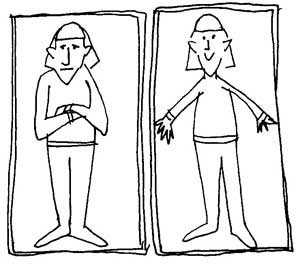



 |
It is How we say something, not what we say through the tone, pitch, and pacing of our voices accounts for approximately 38% of what is communicated to someone. |
A sentence can convey entirely different meanings depending on the emphasis on words and the tone of voice. For example, the statement, "I didn't say you were stupid" has six different meanings, depending on which word is emphasized.
I didn't say you were stupid.
I didn't say you were stupid.
I didn't say you were stupid.
 |
When we are angry or excited, our speech tends to become more rapid and higher pitched. When we are bored or feeling down, our speech tends to slow and take on a monotone quality. When we are feeling defensive, our speech is often abrupt. |
When our messages are inconsistent, the listener may become confused. Inconsistency can also create a lack of trust and undermine the chance to build a good working relationship.
When body language does not correspond to words the body language tends to be believed. Consider the example of someone who through a clenched jaw, hard eyes, and steely high pitched loud voice, telling you that he is not angry. Which are you likely to believe? What you see or what you hear?
The key to receiving messages effectively is listening.
Listening is a combination of hearing what another person says and psychological involvement with the person who is talking. Listening requires more than hearing words. It requires a desire to understand another human being, an attitude of respect and acceptance, and a willingness to open one's mind to try and see things from another's point of view.
Listening requires a high level of concentration and energy. It demands that we set aside our own thoughts and agendas, put ourselves in another's shoes and try to see the world through that person's eyes.
True listening requires that we suspend judgment, evaluation, and approval in an attempt to understand what another people want to say. Listening to understand is, indeed, a difficult task!
Often, people worry that if they listen attentively and patiently to a person who is saying something they disagree with, they are inadvertently sending a message of agreement.
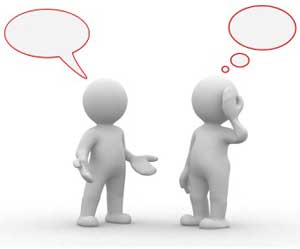
 |
That listening:
|
Learning to be a good listener is a difficult task for many people. However, the specific skills of effective listening behaviour can be learned.
Key listening skills:
1. Giving full physical attention to the speaker;
...that includes appropriate body movement, eye contact, and "posture of involvement". In your body language one says to the speaker, "What you are saying is very important. I am totally present and intent on understanding you".
We create a posture of involvement by:



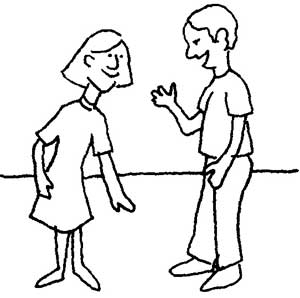
In order to understand the real meaning of what other people say to you, you must be able to gain understanding about both the feeling and the content of the message.
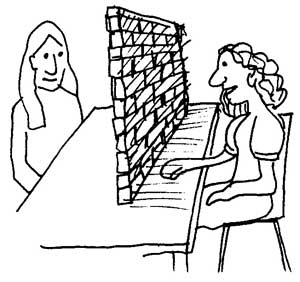
When people are under stress, they are more inclined to create communication barriers.



All of these examples of barriers thwart communication, mutual understanding, respect, problem solving, and identifying solutions that will meet everyone's needs. They put a serious strain on relationships
 |
Effective communication is two way. It involves active speaker and listener. |
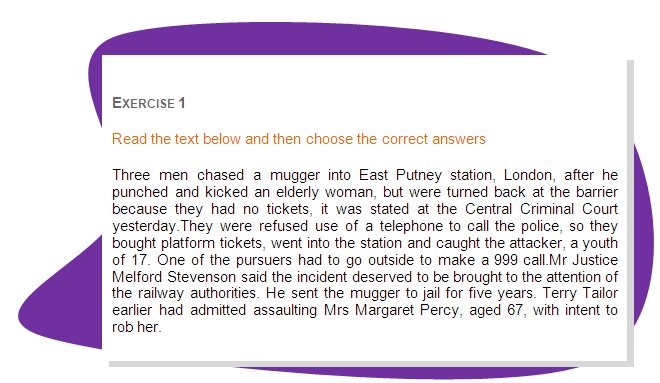
1. Three men were stopped by the police for trying to catch a train without tickets.
True
False
Not in the text
2. Barriers are mostly used to prevent crimes at East Putney station.
True
False
3. An old lady was attacked and injured near a railway station in London.
True
False
Not in the text
4. The railway staff didn't let the pursuers make an emergency call.
True
False
Not in the text
5. Terry Tailor confessed that he had robbed someone before.
True
False
Not in the text
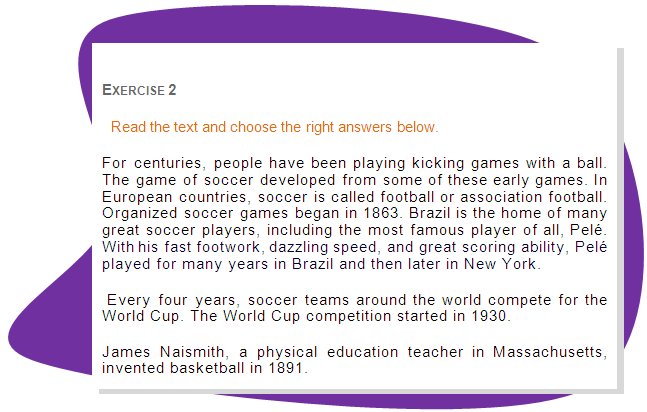
1. Which of the following events happened first?
A. basketball was invented
B. World Cup competition was invented
C. organized soccer games began
2. Pelé is a famous
A. soccer player
B. baseball coach
C. basketball player
3. Read this sentence from the story.
With his fast footwork, dazzling speed, and great scoring ability, Pelé played for many years in Brazil, and then later in New York
What does dazzling mean?
A. amazing
B. funny
C. light
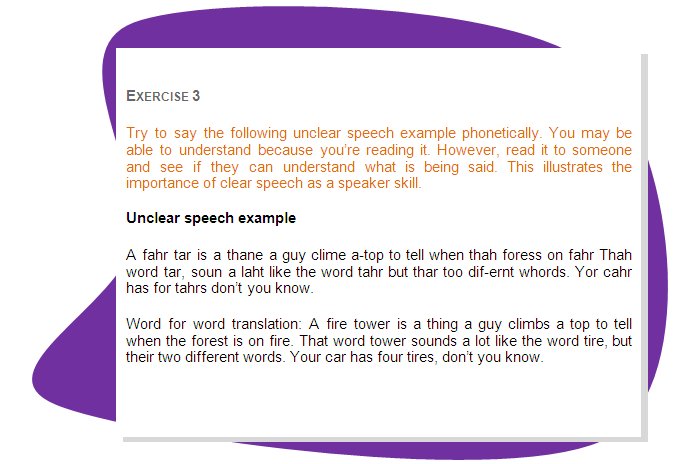
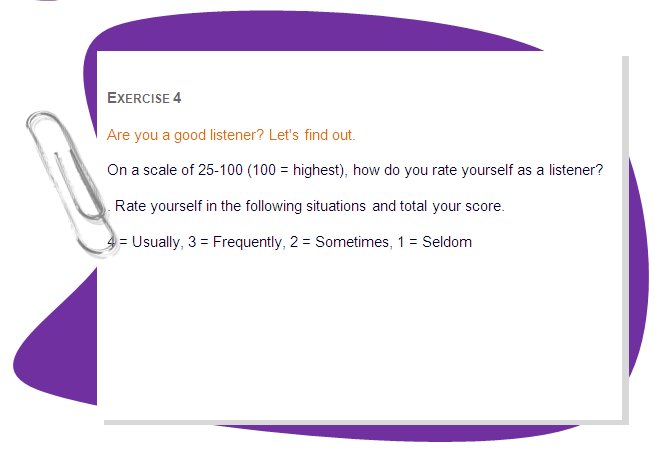
____ I try to listen carefully even when I’m not interested in the topic.
____ I’m open to viewpoints that are different from my own.
____ I make eye contact with the speaker when I’m listening.
____ I try to avoid being defensive when a speaker is venting negative emotions.
____ I try to recognize the emotion under the speaker’s words.
____ I anticipate how the other person will react when I speak.
____ I take notes when it’s necessary to remember what I’ve heard.
____ I listen without judgment or criticism.
____ I stay focused even when I hear things I don’t agree with or don’t want to hear.
____ I don’t allow distractions when I’m intent on listening.
____ I don’t avoid difficult situations.
____ I can ignore a speaker’s mannerisms and appearance.
____ I avoid leaping to conclusions when listening.
____ I learn something, however small, from every person I meet.
____ I try not to form my next response while listening.
____ I listen for main ideas, not just details.
____ I know my own hot buttons.
____ I think about what I’m trying to communicate when I speak.
____ I try to communicate at the best possible time for success.
____ I don’t assume a certain level of understanding in my listeners when speaking.
____ I usually get my message across when I communicate.
____ I consider which form of communication is best: email, phone, in-person, etc.
____ I tend to listen for more than just what I want to hear.
____ I can resist day-dreaming when I’m not interested in a speaker.
____ I can easily paraphrase in my own words what I’ve just heard.
____ Total
 |
Answers to the questions and exercises of Didactic Unit 2 |
1. False
2. False
3. Not in the text
4. True
5. True
1. A
2. B
3. B
Scoring
75-100 = You’re an excellent listener and communicator. Keep it up.
50-74 = You’re trying to be a good listener, but it’s time to brush up.
25-49 = Listening isn’t one of your strong points. Start paying attention.